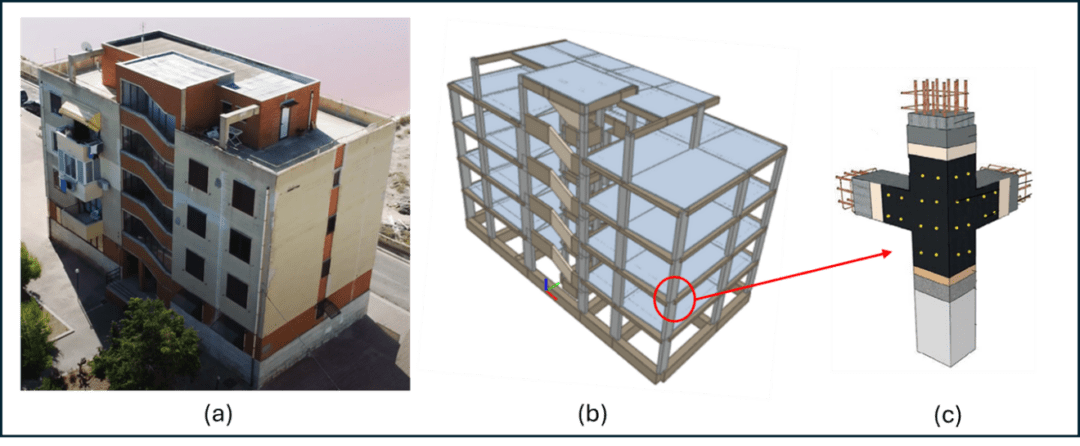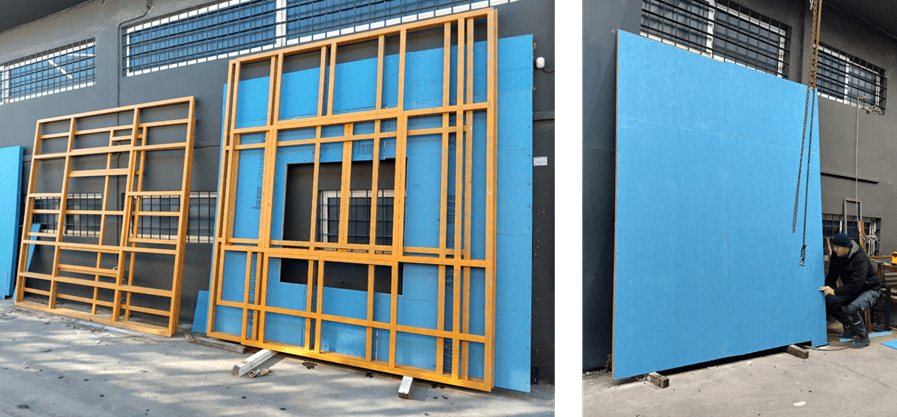The REHOUSE research project development, funded by the European Commission under the HORIZON Europe program (www.research-and-innovation.ec.europa.eu/), continues. The project is coordinated by the Spanish lead partner CARTIF (www.cartif.es).
REHOUSE aims to assess the effectiveness of 8 distinct and innovative Renewable Packages –RP– implemented across 4 demonstration sites, including the Italian site in Margherita di Savoia (BAT). This site involves a residential building owned by ARCA Capitanata, a project partner, intended for low-income housing (Fig. 1).
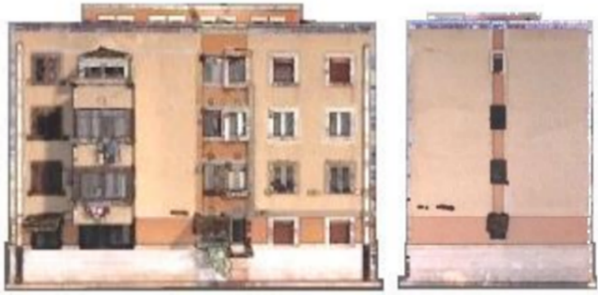
In this context, RI Spa (www.rigroup.it), representing the Renovation Package Nr.5 (RP#5) named Multi-Purpose Facade (Fig.2), has developed an innovative prefabricated system that wraps around and reduces the energy consumption of the building, thanks to two components produced by partners SUNAGE (www.sun-age.it) and BIOMAT (www.pedoneworking.it) corresponding to the facade layers.
- BIPV (Building Integrated Photo Voltaic Panel): vertical photovoltaic modules for building facades;
- HEMP Insulation: thermal-acoustic insulation of special multi-layer hemp panels.
Three types of efficiency characterise the innovative prefabrication system RP#5:
- In adherence to the existing envelope, thanks to the bio-based insulating coat;
- In the cavity, thanks to mechanical ventilation;
On the facade, thanks to photovoltaic modules that harmonise with the surroundings.

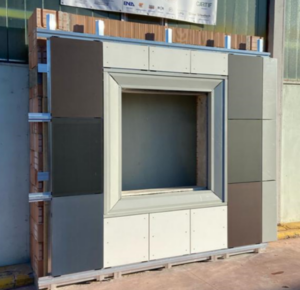
Since the project start (18-months ago), the Working Group on RP#5, which also includes SUPSI –University of Applied Sciences and Arts of Southern Switzerland– (https://www.supsi.ch/), achieved the D-1 prototype (Fig.3).
Recently, during a meeting (Fig.4) attended by the lead partner ENEA (www.enea.it), the designers and technology partners validated the mosaic distribution (Fig.5, facade at the balcony side), which will enable the facade to produce 53 kWp from renewable sources, in addition to ensuring an overall thermal transmittance of 0.27 W/m²K. This will significantly contribute to reducing CO2 emissions for the utilities associated with the eight low-income housing units.

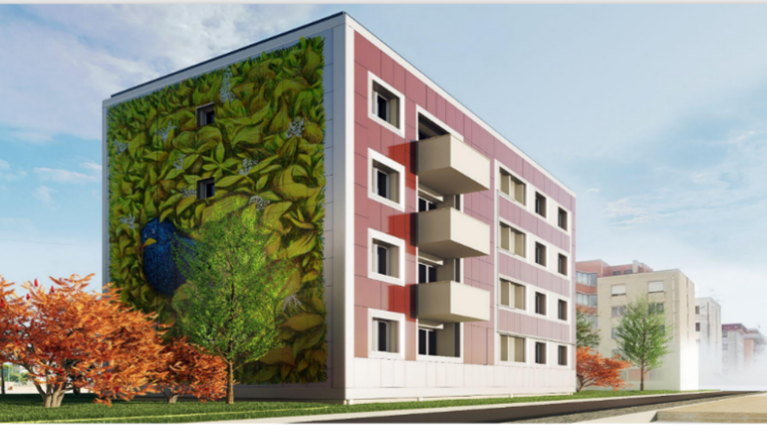
Author: Cosimo Tafuro, R.I. SpA – Modular Building Systems

